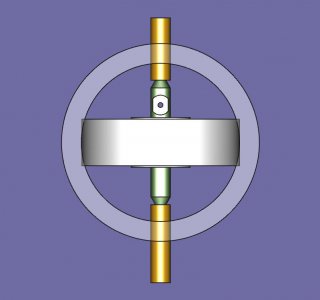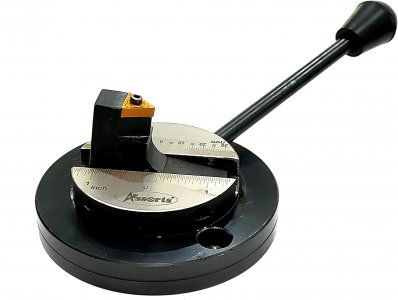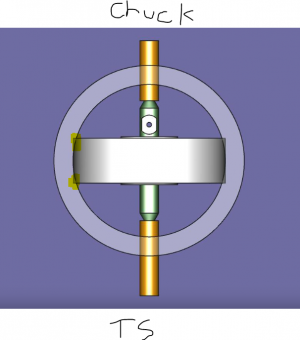- Joined
- Dec 18, 2019
- Messages
- 7,430
I have a small cast iron flywheel that I want to turn into a gyroscope. Have a basic design cobbled up. I knew, and can plainly see I need to radius the flywheel so it fits in the cage or ring. I can fudge it, but how would one do this "for real"? Flywheel is 2"OD. Ring is 2"ID. So I need to radius the wheel so it doesn't interfere with the ring. That makes it a hair under a 1" radius.

Can this be done with a ball turner?

Can this be done with a ball turner?



